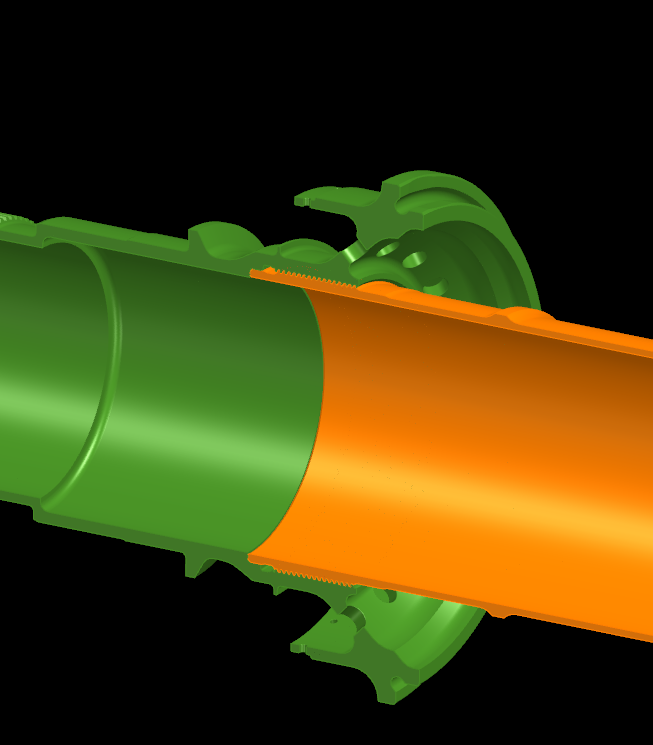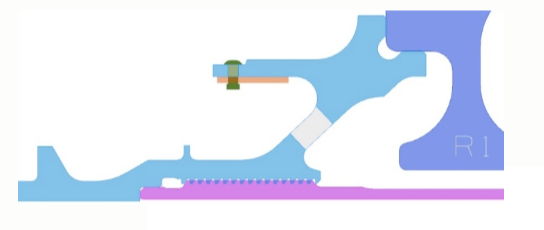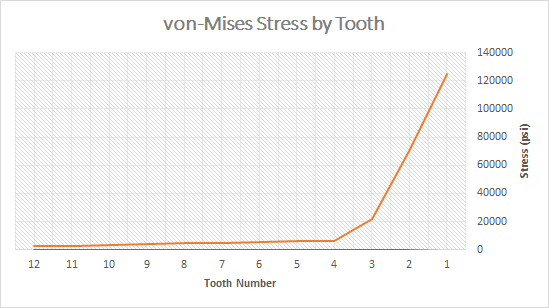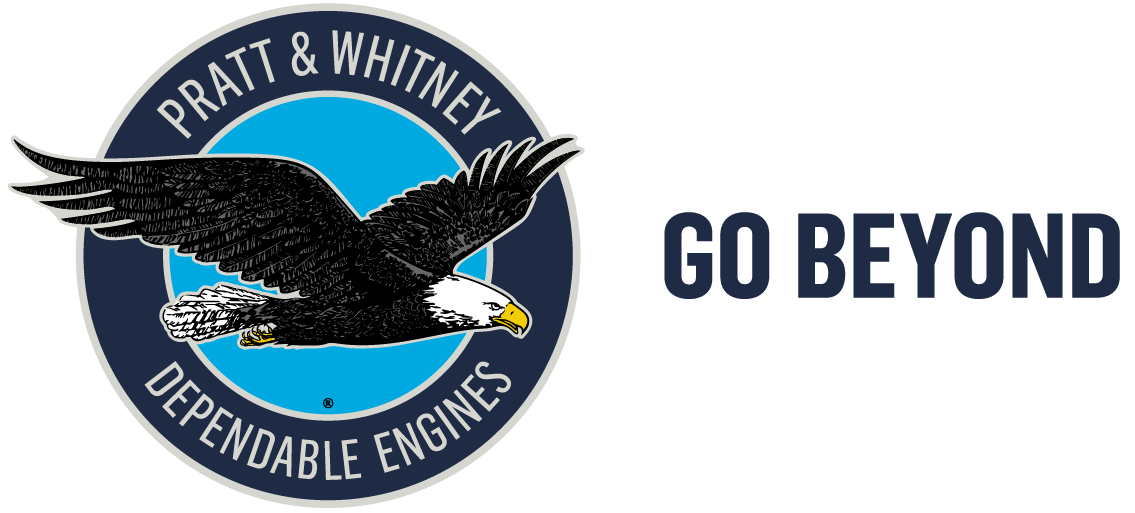
Figure 1

Figure 2

Team 44
Team Members |
Faculty Advisor |
Jeff Giusto |
Vito Moreno Sponsor Pratt & Whitney |
sponsored by

Team ME44’s project effort is to optimize a power thread in a Pratt and Whitney engine, which connects the tie-shaft to the front hub. The purpose of the tie-shaft is to transmit loading, both preloads and in-flight loads, and to reduce vibration in the assembly. Prior to beginning the project, P&W saw upwards of 90% of applied loading distributed on the first 3 teeth of the thread. Regardless if the entire thread has anywhere between 10-15 teeth, for example, this extreme stress concentration is seen at the first three teeth. High stress concentrations can lead to reduced assembly life, permanent damage due to fretting and galling on the thread surfaces, and unsafe operating conditions if failure were to occur. Several parameters can be changed in such a thread; fillet radius, tooth width, flank, pitch, and even varying each of these by tooth along the thread form. However, through analytical testing, ME44 narrowed the focus to solely focus on pitch and flank angle as the only variable items in the geometry. Maximum and minimum values for flank and pitch angle, changed at predetermined intervals, served as guidance for thread geometry options. To ensure manufacturability, ME44 must stay within the aforementioned intervals. There are over 44,000 thread design options under this guidance. ME44 explored how changing both pitch and flank throughout the allowed interval affected the overall load distribution along the axial thread and made a design proposal to the sponsor (P&W).
